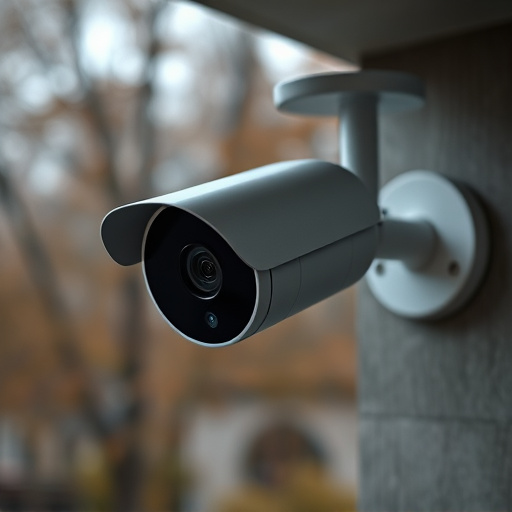Wireless hidden cameras with integrated DVRs offer advanced surveillance through covert operation, high-quality imaging, and remote access via smartphone apps. These devices enhance security for homes, offices, and public spaces by providing clear footage, discreet design, and easy installation. Key features to consider include HD resolution, night vision, robust wireless connectivity, motion detection, and user-friendly setup options. Legal and ethical considerations, such as regional regulations, transparency, data security, and responsible usage, are crucial when deploying these surveillance tools.
“Uncover the power of surveillance with wireless hidden cameras equipped with built-in DVR technology. This cutting-edge device offers a discreet yet comprehensive security solution, capturing and recording high-quality footage without disrupting your environment.
In this article, we’ll explore the inner workings of these sophisticated devices, their diverse applications, and essential features to guide your purchase. We’ll also delve into legal considerations, ensuring you navigate this technology’s ethical boundaries with confidence.”
Understanding Wireless Hidden Cameras with Built-in DVR: The Technology
Wireless hidden cameras with built-in DVRs have revolutionized surveillance technology, offering a discreet and convenient way to capture and record video footage. These innovative devices seamlessly combine the capabilities of a high-quality camera and a digital video recorder (DVR) into a single, compact unit. The ‘hidden’ aspect refers to their design—they are often disguised as everyday objects like smoke detectors, light bulbs, or even buttons, making them virtually invisible to potential intruders.
The built-in DVR feature enables the camera to record and store videos directly onto an internal memory card or over a wireless network. Users can remotely access recorded footage via a smartphone app or computer software, providing real-time monitoring and peace of mind. This technology has gained immense popularity for home security, pet surveillance, and professional applications due to its ease of installation, wire-free operation, and advanced recording capabilities.
Benefits and Applications of Hidden Camera with DVR Integration
A hidden camera with a built-in DVR offers numerous benefits and has a wide range of applications. This sophisticated technology allows for discreet surveillance, making it ideal for home security, business monitoring, or even legal investigations. The DVR component enables users to record and review footage remotely, providing a continuous watchful eye on various locations without any physical presence required.
These devices are versatile and can be strategically placed in homes, offices, or public spaces to capture unaltered, real-world scenes. They offer peace of mind by deterring potential intruders or unethical behavior while also facilitating the quick retrieval of evidence for future reference. With their compact size and sleek design, hidden cameras with DVR integration seamlessly blend into their surroundings, ensuring a discreet and effective monitoring solution.
Key Features to Consider When Buying a Wireless Hidden Camera DVR
When purchasing a wireless hidden camera DVR, several key features should capture your attention to ensure it meets your surveillance needs. Firstly, consider the resolution; higher definitions like 1080p or 4K offer sharper images, crucial for identifying details. These cameras often come with night vision capabilities, enabling clear footage even in low-light conditions. Additionally, a reliable wireless connection is vital; opt for models with strong signal strength and secure encryption to prevent interference or unauthorized access.
Storage capacity is another essential factor. Hidden cameras with built-in DVRs typically use micro SD cards, so ensure the device supports sufficient storage space for your needs. Motion detection is a popular feature that triggers recording only when movement is detected, conserving storage space. Lastly, consider ease of setup and use; some models offer plug-and-play functionality or even mobile app control, making them convenient options for monitoring purposes.
Setting Up and Using Your Wireless Hidden Camera DVR Effectively
Setting up and using your wireless hidden camera DVR effectively involves a few simple steps to ensure optimal performance. Begin by locating an ideal spot for the device, considering areas that offer clear line-of-sight access to the target area while remaining unseen. Securely mount or place the camera, ensuring it’s steady and aligned correctly. Once positioned, connect the camera to your network using its wireless capabilities. This process typically involves scanning for available networks and selecting yours from a list. After successful connection, access the device via your smartphone, tablet, or computer using the dedicated app or web interface provided by the manufacturer.
From there, configure your settings, including resolution, frame rate, and recording options to suit your needs. Ensure motion detection is set appropriately to avoid false alerts while capturing relevant footage. Test the camera’s functionality by triggering it remotely or waiting for automatic activation due to movement. Regularly review recorded clips and adjust settings as necessary to maximize the effectiveness of your hidden camera with built-in DVR.
Legal and Ethical Considerations for Using Wireless Hidden Cameras with DVR
Using a wireless hidden camera with built-in DVR can be an attractive option for home or business security, offering remote monitoring and recording capabilities. However, it’s crucial to navigate legal and ethical considerations before deploying such devices. The legality of hidden cameras varies significantly by jurisdiction; some regions have strict rules about the use of surveillance technology, particularly in private residential areas.
Ethically, there should be transparency regarding the presence of hidden cameras. Individuals or organizations installing these devices must inform others within the space being monitored to avoid invasion of privacy concerns. Additionally, storage and access to recorded footage require careful handling to ensure data security and prevent unauthorized use or distribution.
